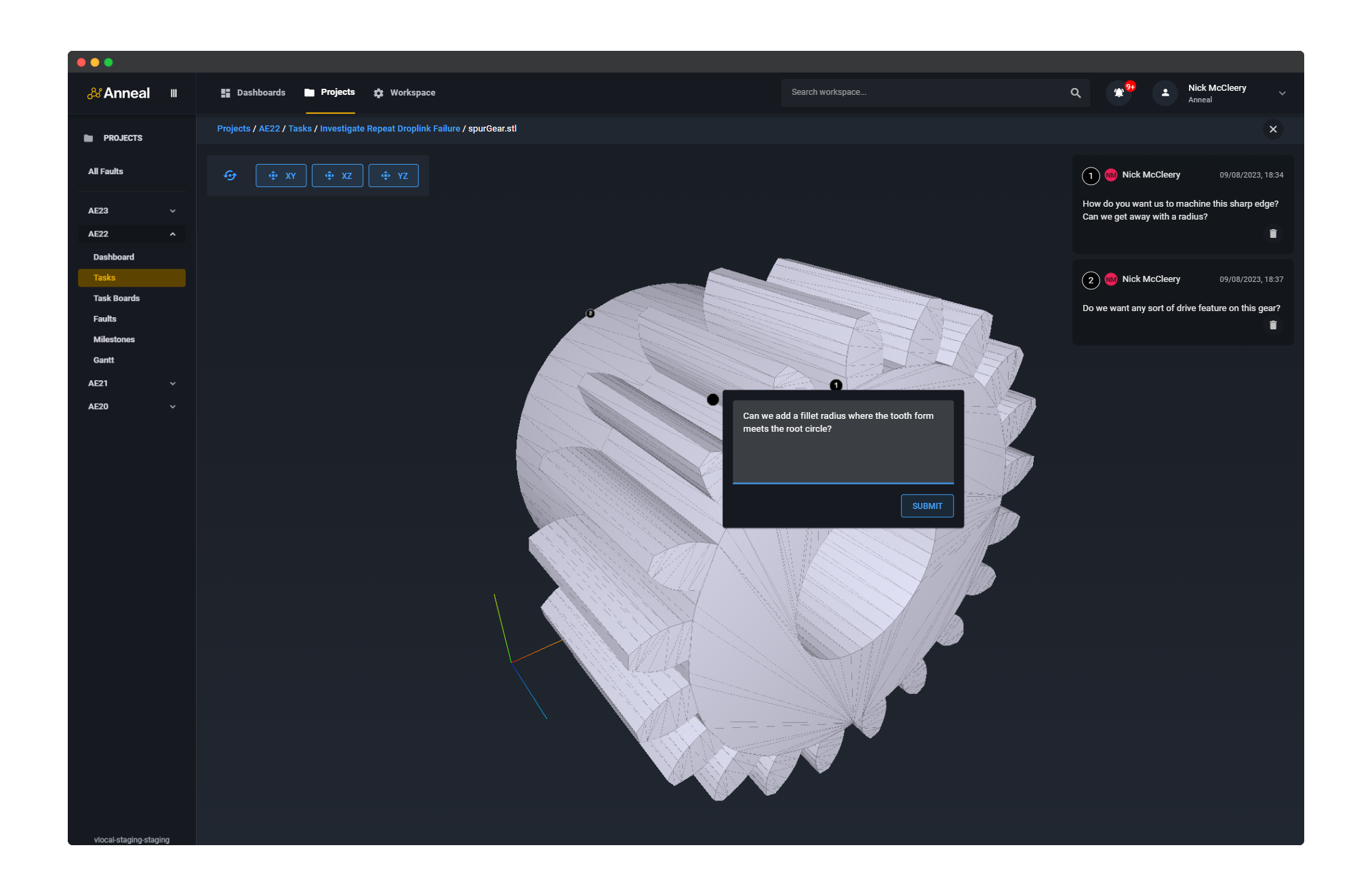Introduction
Anneal1 is a collaborative engineering management system.
Designed as a system of engagement for mixed discipline teams of engineers working on complex physical products, Anneal lets engineers collaboratively plan, discuss, and review engineering concepts, designs, and drawings.

An Operating System for the Drawing Office
Anneal's Engineering OS helps keep engineers on the same page, digitises the peer review process, and reduces risk of late-stage redesign.
On top of engineering-oriented task, fault, and project management, we support things like real-time, multi-agent 2D drawing markup and annotation, plus 3D CAD annotation. We also provide extensive support for for the rendering of equations.
Designed to complement and extend existing engineering software stacks, Anneal forms a central, digital workspace for engineering teams.

Motivation
Modern engineering is gripped by a productivity crisis. Today, engineers spend as little as 41% of their time on productive, value-added work.
Instead, engineers are spending their time battling with outdated approaches to communication, collaboration, and information management. Engineers spend 25% of that non-value-added time simply searching for information. They also face repeated, significant challenges with review and sign-off procedures for CAD data, drawings, and even simple engineering documents2.
Frustrated by the status quo3, and jealous of the myriad of desirable tools available to our software colleagues—from GitHub and GitLab to JIRA and Linear—we decided to build a modern, effective, user-friendly system that addresses these issues.
Goals
We break our product's ambitions down into four high-level goals. We want to help engineering teams achieve the following:
1. Speed
Move quickly and iterate faster. Document ideas and concepts, detail component failures, describe work undertaken, and collaborate with your team—all in one place, with a system designed for fast, painless user interaction.
2. Traceability
Have full confidence that all engineering decision making is recorded and tracked over time. Version control everything, even discussions, comments, and files that live outside your PDM system.
Feel secure that your engineering OS will build an audit trail of what happened and when, without imposing any more bureaucratic workload on your team.
3. Observability
Find the information you need, when you need it—without having to scour inboxes or network drives. Discover who's working on what and how it's progressing, and be notified when something relating to your responsibilities changes.
4. Simplicity
Get to grips with software quickly. Understand what it does, and how it does it. Engineering should be about the products, so the systems, concepts, language, and interactions you have with enabling technologies should be as simple to understand as possible, wherever possible.
On simplicity of language, our operating guidelines for effective, productive engineering say the following:
...agile jargon has no legitimate role in complex hardware development. In the interest of shared understanding, tasks should be known as tasks, and projects as projects. Priorities and severities should be defined via simple, easy to understand hierarchies.
Footnotes
- We take our name from the heat treatment. Like the heat treatment, we make things more workable.↩
- To learn more about the crisis we are currently facing as an industry, read our research-backed analysis of the situation.↩
- Our team of engineers have worked places like the Mercedes Formula One team, what is now the Aston Martin Formula One team, semiconductor giant Qualcomm, and electrical power infrastructure innovator Camlin Technologies.↩